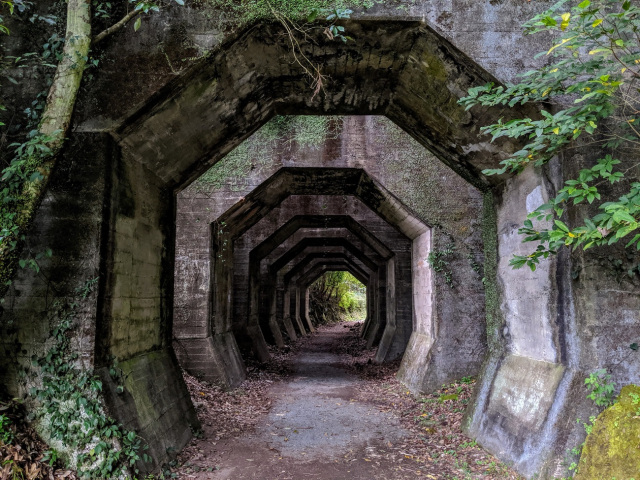
Come with us as we take you off the beaten path to a spot tourists are yet to discover.
While most people who visit Japan journey along the well-beaten path between Osaka, Kyoto and Tokyo, there’s a whole world of breathtaking sites and hidden discoveries lying outside these urban areas. Today we’d like to introduce you to one of these hidden sites, which is well-known to locals but still yet to be discovered by tourists, and it’s located well off the beaten track, tucked away in the mountain town of Misato in Kumamoto Prefecture, on Japan’s southern island of Kyushu.
With no train access, Misato can be accessed in about 30 minutes by car and 90 minutes by bus from Kumamoto City, and with a population of roughly 10,000, it’s a quiet, peaceful locale that’s best known for its historic stone bridges.
Toshinebashi Bridge, for example, is about 24 metres (78 feet) high, and was built in the Taisho period (1912-1926) to carry the main traffic on the prefectural road. It’s an impressive structure, particularly considering the number of stones used in its construction approximately a century ago.
We were interested in checking out another man-made structure while we were in the vicinity: the mysterious octagonally shaped Hakkaku Tunnel. Located off National Route 443 near the Toshinebashi Bridge, the tunnel is hidden from the main road with only a small sign at the carpark in front of the path leading up to it, written in Japanese.
It’s a 200-metre (0.1-mile) walk from this sign to the tunnel, and with nobody around as you walk the leafy mountain path towards it, you quickly begin to feel as if you’re walking through the home of magical creatures from a Studio Ghibli anime movie.
The comforting crunch of the leaves beneath your feet is all you’ll have to keep you company, and as the path narrows near the tunnel, things start to feel a little creepy.
As you walk around the winding path, the tunnel gradually begins to appear, presenting itself with a mysterious aura that causes your jaw to drop as you begin to take in its unique appearance.
Entering through the first octagonal opening feels like entering another dimension. Part sci-fi, part steam-punk, part fantasy game world, it’s not just the structure itself but the eerie stillness and the way the light hits it that makes it feel so otherworldly.
The tunnel is made up of seven octagonal rings, and walking through them makes you feel like you’re travelling in a time machine, creating a mixture of emotions ranging from awe through to fear, excitement, and exhilaration.
▼ Warping through space and time in the octagonal tunnel is a lot of fun.
Delving into the mystery of the structure reveals it was actually constructed back in 1915, when the Yuuen Railway opened in the area, running for a total length of 28.6 kilometres to Misato from what’s now known as Kumamoto City. Hakkaku Tunnel (Hakkaku translates to “octagon”) was designed to prevent rocks falling from both sides onto the railway, but the reason why it consists of seven unconnected octagonal arches is still a mystery.
There are several theories behind it, the most popular being that it was an attempt to reduce construction costs. It was abandoned when the railway closed in 1964, but now, 50 years later, it remains as a site for people to connect with the area’s industrial history.
We’ve yet to meet another tunnel with such a mysterious pull, and we highly recommend seeking it out whenever you’re in the area. The most memorable sightseeing spots are often those you have entirely to yourself, and we’re glad this one is out of the way to save it from being overrun with tourists and Instagrammers.
If adventures like this make you hungry for more off-the-beaten path discoveries, you might want to check out this otherworldly power spot and the edible insect vending machine, both also located in Kumamoto Prefecture.
Site information
Hakkaku Tunnel / 八角トンネル
Address:Kumamoto-ken, Shimomashiki-gun, Misato, Komushiro
熊本県下益城郡美里町小筵
Photos ©SoraNews24
● Want to hear about SoraNews24’s latest articles as soon as they’re published? Follow us on Facebook and Twitter!
[ Read in Japanese ]

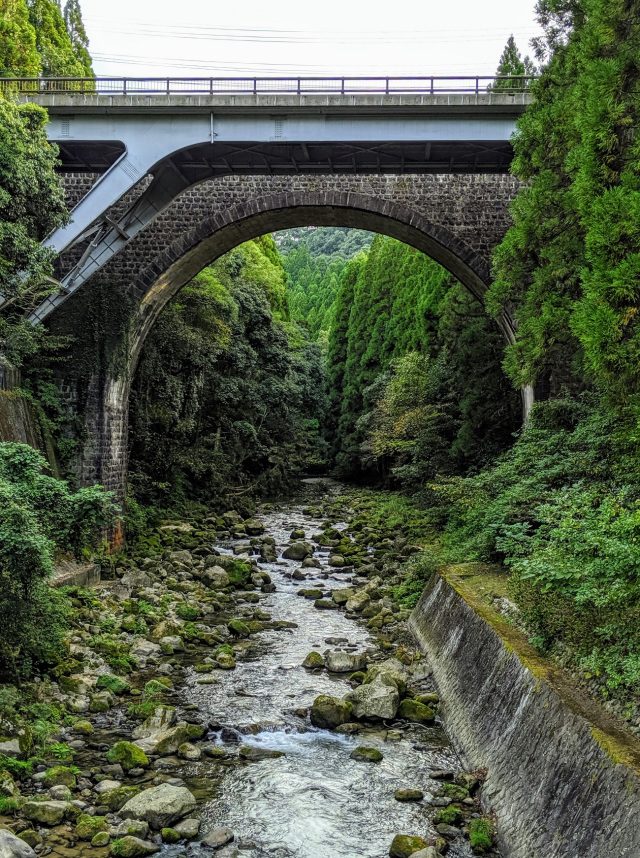
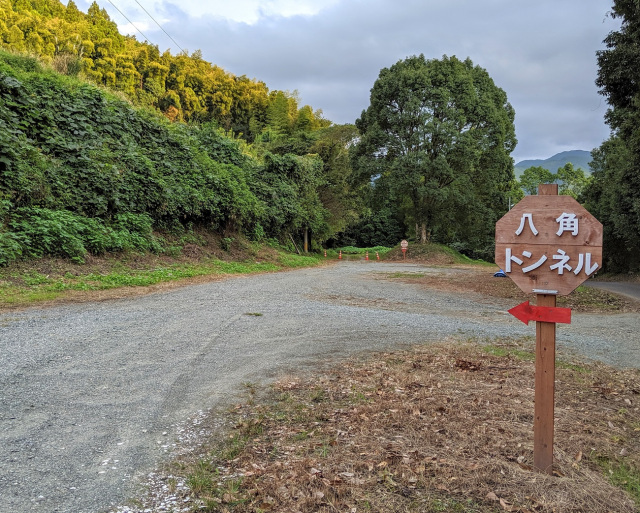
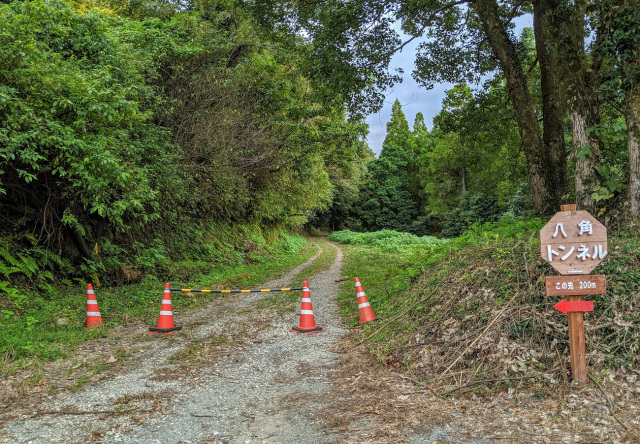
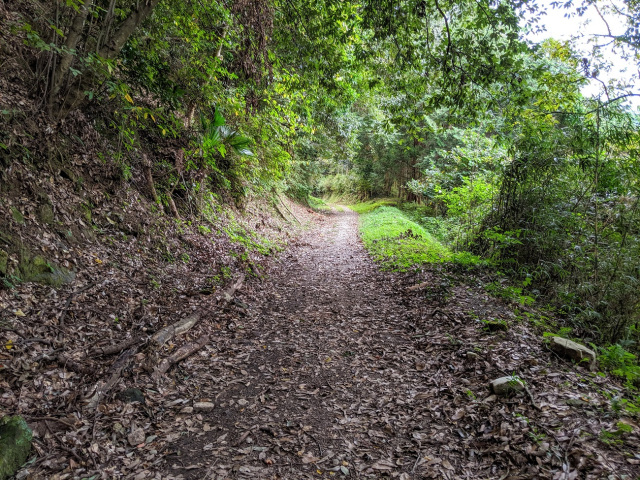
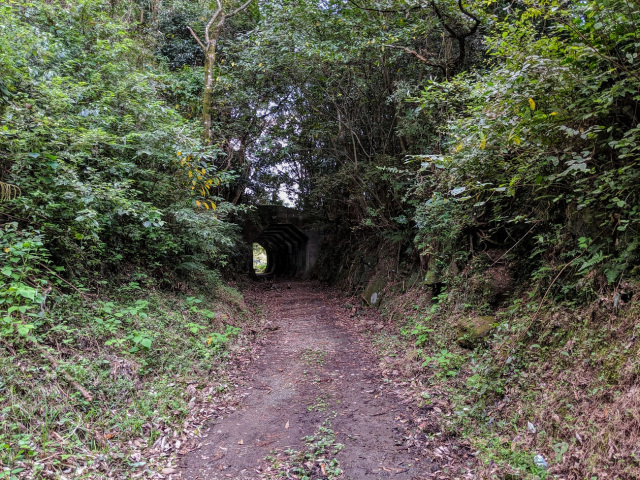
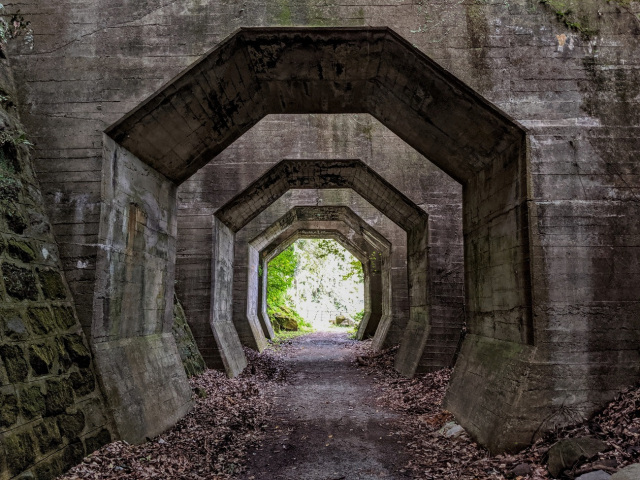
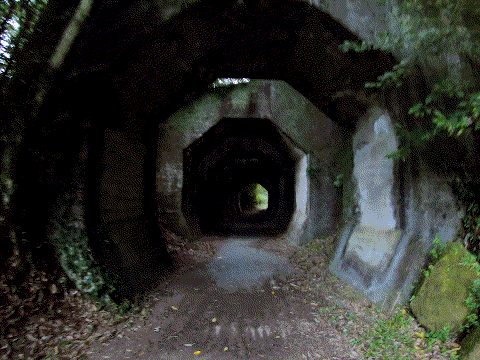
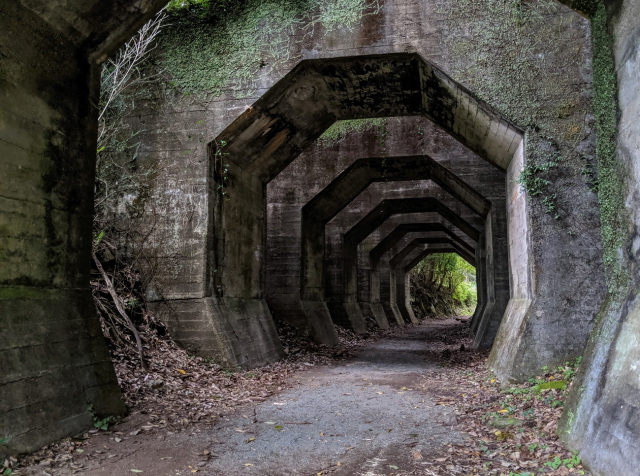
 Japan Travel: Mysterious rockstar Jizo statue found at Kiyomizudera temple
Japan Travel: Mysterious rockstar Jizo statue found at Kiyomizudera temple Japan Travel: What it’s like to go on a solo journey on a Japanese restaurant train
Japan Travel: What it’s like to go on a solo journey on a Japanese restaurant train We investigate Sendagaya Tunnel and get a message from beyond【Haunted Tokyo】
We investigate Sendagaya Tunnel and get a message from beyond【Haunted Tokyo】 Amigara Fault for cars?! Tunnel in Okayama just barely big enough for vehicles to fit through
Amigara Fault for cars?! Tunnel in Okayama just barely big enough for vehicles to fit through Karate dojo students practice under freezing waterfall… in the middle of winter
Karate dojo students practice under freezing waterfall… in the middle of winter Japan’s new difficult-to-drink-from beer glass protects your liver, but it’s a brutal experience
Japan’s new difficult-to-drink-from beer glass protects your liver, but it’s a brutal experience Demon Slayer: Kimetsu no Yaiba gets new roller coaster attractions and food at Universal Studios Japan
Demon Slayer: Kimetsu no Yaiba gets new roller coaster attractions and food at Universal Studios Japan How to order snacks on a Shinkansen bullet train in Japan
How to order snacks on a Shinkansen bullet train in Japan Burger King Japan suddenly adds Dr. Pepper and Dr. Pepper floats to its menu nationwide
Burger King Japan suddenly adds Dr. Pepper and Dr. Pepper floats to its menu nationwide New Pokémon ice cream, dessert drinks, and cool merch coming to Baskin-Robbins Japan【Pics】
New Pokémon ice cream, dessert drinks, and cool merch coming to Baskin-Robbins Japan【Pics】 Caffeinated ramen for gamers that you can eat with one hand going on sale in Japan
Caffeinated ramen for gamers that you can eat with one hand going on sale in Japan New samurai glasses are Japan’s latest weird must-have souvenir
New samurai glasses are Japan’s latest weird must-have souvenir McDonald’s adds new watermelon frappe and fruity macaron to its menu in Japan
McDonald’s adds new watermelon frappe and fruity macaron to its menu in Japan Princesses, fruits, and blacksmiths: Study reveals the 30 most unusual family names in Japan
Princesses, fruits, and blacksmiths: Study reveals the 30 most unusual family names in Japan We check out the local flavors of the commonly confused Ome and Aomi areas of Tokyo in one day
We check out the local flavors of the commonly confused Ome and Aomi areas of Tokyo in one day Nintendo history you can feel – Super NES, N64, and GameCube controllers become capsule toys
Nintendo history you can feel – Super NES, N64, and GameCube controllers become capsule toys Hello, cosmetics! Clinique teams up with Hello Kitty this summer for first-time collaboration
Hello, cosmetics! Clinique teams up with Hello Kitty this summer for first-time collaboration “The most Delicious Cup Noodle in history” – Japan’s French Cup Noodle wins our heart【Taste test】
“The most Delicious Cup Noodle in history” – Japan’s French Cup Noodle wins our heart【Taste test】 Starbucks releases a cute Frappuccino and Unicorn Cake…but not in Japan
Starbucks releases a cute Frappuccino and Unicorn Cake…but not in Japan Kyoto Tower mascot termination reveals dark side behind cute Japanese characters
Kyoto Tower mascot termination reveals dark side behind cute Japanese characters McDonald’s Japan’s Soft Twist Tower: A phantom ice cream only sold at select branches
McDonald’s Japan’s Soft Twist Tower: A phantom ice cream only sold at select branches Yabai Ramen: What makes this Japanese ramen so dangerous?
Yabai Ramen: What makes this Japanese ramen so dangerous? Finally! Nintendo Japan expands Switch 8-bit controller sales to everybody, Online member or not
Finally! Nintendo Japan expands Switch 8-bit controller sales to everybody, Online member or not Japanese government wants to build luxury resorts in all national parks for foreign tourists
Japanese government wants to build luxury resorts in all national parks for foreign tourists To combat declining birth rate, Japan to begin offering “Breeding Visas” to foreigners
To combat declining birth rate, Japan to begin offering “Breeding Visas” to foreigners 10 things you should buy at 7-Eleven in Japan
10 things you should buy at 7-Eleven in Japan Studio Ghibli releases anime heroine cosplay dresses that are super comfy to wear
Studio Ghibli releases anime heroine cosplay dresses that are super comfy to wear Woman charged for driving suitcase without a license in Osaka
Woman charged for driving suitcase without a license in Osaka Studio Ghibli unveils My Neighbour Totoro miniature house model
Studio Ghibli unveils My Neighbour Totoro miniature house model Kyoto experiencing problems with foreign tourists not paying for bus fares, but not on purpose
Kyoto experiencing problems with foreign tourists not paying for bus fares, but not on purpose Fighting mild hunger with a Japanese soda that turns into jelly in the stomach【Taste test】
Fighting mild hunger with a Japanese soda that turns into jelly in the stomach【Taste test】 Studio Ghibli’s Howl’s Moving Castle tapestry unveiled in Japan for first time
Studio Ghibli’s Howl’s Moving Castle tapestry unveiled in Japan for first time McDonald’s new Happy Meals offer up cute and practical Sanrio lifestyle goods
McDonald’s new Happy Meals offer up cute and practical Sanrio lifestyle goods Sales of Japan’s most convenient train ticket/shopping payment cards suspended indefinitely
Sales of Japan’s most convenient train ticket/shopping payment cards suspended indefinitely Sold-out Studio Ghibli desktop humidifiers are back so Totoro can help you through the dry season
Sold-out Studio Ghibli desktop humidifiers are back so Totoro can help you through the dry season Japanese government to make first change to romanization spelling rules since the 1950s
Japanese government to make first change to romanization spelling rules since the 1950s Foreigner’s request for help in Tokyo makes us sad for the state of society
Foreigner’s request for help in Tokyo makes us sad for the state of society Ghibli founders Toshio Suzuki and Hayao Miyazaki contribute to Japanese whisky Totoro label design
Ghibli founders Toshio Suzuki and Hayao Miyazaki contribute to Japanese whisky Totoro label design Doraemon found buried at sea as scene from 1993 anime becomes real life【Photos】
Doraemon found buried at sea as scene from 1993 anime becomes real life【Photos】 Tokyo’s most famous Starbucks is closed
Tokyo’s most famous Starbucks is closed Fukuoka’s “Wisteria Tunnel” delights visitors with pretty pastel petals
Fukuoka’s “Wisteria Tunnel” delights visitors with pretty pastel petals We track down the stunning Ghibli-like waterfall made famous online — just outside Tokyo!【Pics】
We track down the stunning Ghibli-like waterfall made famous online — just outside Tokyo!【Pics】 Chance to see Japan bucket-list must-see scenery “Road to Laputa” gone for good?
Chance to see Japan bucket-list must-see scenery “Road to Laputa” gone for good? Japanese public toilet becomes a tourist attraction in Tokyo
Japanese public toilet becomes a tourist attraction in Tokyo The top 5 places to see the sun set in Japan
The top 5 places to see the sun set in Japan The only path to this Nagasaki Shinto shrine gets swallowed by the sea every day【Video】
The only path to this Nagasaki Shinto shrine gets swallowed by the sea every day【Video】 Footage of very loud Hokkaido Shinkansen tunnel blast delights the public【Video】
Footage of very loud Hokkaido Shinkansen tunnel blast delights the public【Video】 10 gorgeous, must-visit places to see the autumn leaves in Japan
10 gorgeous, must-visit places to see the autumn leaves in Japan The Japanese train station with torii gates on its tracks
The Japanese train station with torii gates on its tracks Huge torii gate found in the middle of a busy Kumamoto intersection
Huge torii gate found in the middle of a busy Kumamoto intersection Japan issuing beautiful new coins to celebrate Emperor Naruhito’s enthronement
Japan issuing beautiful new coins to celebrate Emperor Naruhito’s enthronement Ghibli Park: Opening date, first photos, and a new promo video produced by Studio Ghibli!
Ghibli Park: Opening date, first photos, and a new promo video produced by Studio Ghibli! Japan’s five easiest-to-get-lost-on mountain trails are like alpine brain teasers【Photos】
Japan’s five easiest-to-get-lost-on mountain trails are like alpine brain teasers【Photos】 Ghibli Museum video takes us into the steam punk elevator and up the spiral staircase【Video】
Ghibli Museum video takes us into the steam punk elevator and up the spiral staircase【Video】 Kitakyushu’s spectacular wisteria tunnel is blooming! You don’t want to miss it!
Kitakyushu’s spectacular wisteria tunnel is blooming! You don’t want to miss it!
Leave a Reply